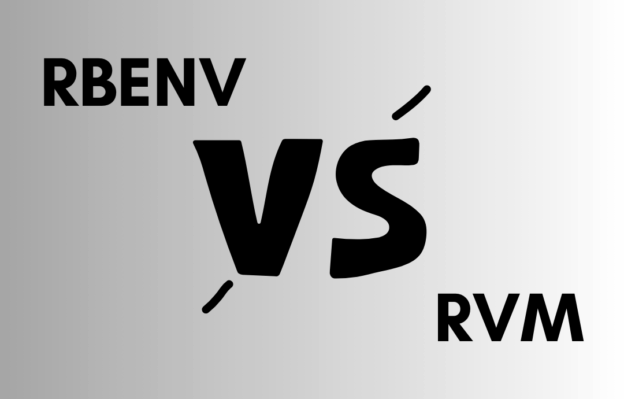rbenv and rvm are both Ruby version management tools. They allow users to install, manage, and work with multiple versions of Ruby on the same system. Here’s a comparison of the two to help you decide which might be better for your needs. Personally, I tend to use rbenv just because I’ve had better results with it, but that’s just me, and here I offer you an objective comparison.
rbenv:
Pros:
- Lightweight:
rbenvitself only provides the bare minimum to handle version switching. It utilizesruby-build(as a standalone tool or as anrbenvplugin) to handle the actual installation of different Ruby versions. - Simplicity: It doesn’t override shell commands like
gemorruby. Instead, it relies on shims to insert the correct Ruby version into your path. - No Gemset: It doesn’t have the concept of gemsets out of the box (sets of gems tied to specific Ruby versions). However, a plugin can be used if this functionality is needed (
rbenv-gemset).
Cons:
- More Manual: Especially when compared to
rvm. You might need to install more plugins or manage more configurations yourself.
rvm:
Pros:
- Feature-Rich: Comes bundled with a lot of functionality. This includes gemsets, which allow for different sets of installed gems for each Ruby version.
- More Automated:
rvmoften handles things like installing dependencies automatically. - Widespread Use: Historically,
rvmwas more popular (thoughrbenvhas gained substantial traction).
Cons:
- Overhead: Due to its comprehensive approach and bundled features,
rvmcan feel heavyweight and a bit more complex, especially for new users. - Overriding Commands:
rvmoverrides shell commands forruby,gem, and others, which can lead to unexpected results in some cases.
Which to Choose?
- For simplicity and lightweight needs: Go with
rbenv. It does the basic job of managing Ruby versions without adding much overhead. - For a feature-rich environment or if you need gemsets:
rvmmight be a better choice. It provides a lot out of the box, which can be very useful for more complex setups.
In practice, both tools do their primary job quite well, and the choice often comes down to personal preference or specific project requirements. If you’re new to both, try starting with rbenv due to its simplicity. If you find something lacking, you can always explore rvm later.
